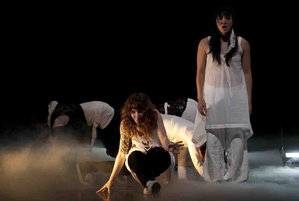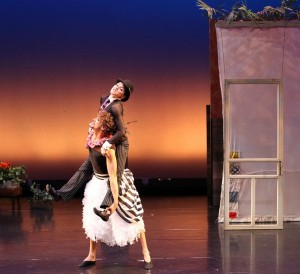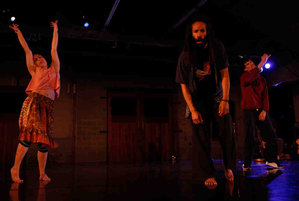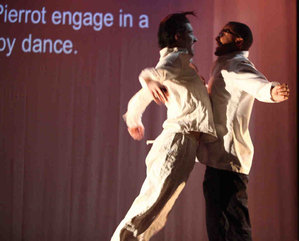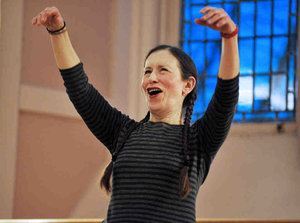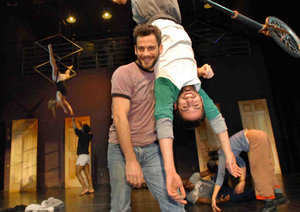By Merilyn Jackson
FOR THE INQUIRER
The backbone of the month-long Philadelphia International Festival of the Arts has been more local than international, with collaborations among many Philadelphia arts groups.
Some were unlikely matches and few will live on memorably as great works of art, yet many have resulted in surprisingly high-quality works that made for pleasurable evenings in the theater.
One of those occured Thursday evening in the Kimmel’s Perelman space, with the Philadelphia premier of Igor Stravinsky’s Renard, his Ragtime, and Terry Teachout and Paul Moravec’s Danse Russe.
In Renard, a collaboration among the Kun-Yang Lin/Dancers, Orchestra 2001, and Center City Opera Theater, the orchestra, singers and dancers gave us a sparkling reinterpretation of the 1916 work that Stravinsky called a burlesque for the stage with singing and music.
Was the original just too flimsy to bother remounting as a concert work without set? From my elevated view in the first balcony, I could better see the dance’s choreographic patterns than those on the unraked orchestra section, which had been emptied of seats and filled with cabaret tables and chairs.
The six dancers in masks by Hua Hua Zhang all wore black formal suits by Amy Chmielewski. They danced within a wedge of stage left after the orchestra and male quartet filled the other side – a stage divided, with little interaction between the forces. Dancers fell to their sides on one knee, springing into cartwheels, their arms and hands signaling a strategy to rescue the Hen (played by Olive Prince) that was captured by Scott McPheeters, as Renard. The other creatures formed a militaristic marching line and retreated to their chairs, each with its own American flag. McPheeters pulleds wads of money from a suitcase as if to bribe the other animals.
With these objects, Lin sought, perhaps semiotically, to inject a political nod to contemporary issues of war and economy, but the choreography in this work did not spring from his usual deep well of meaning and, unlike much of his other work, was difficult to read. The dance seemed to still be in sketch stage, and that may be where it should remain.
Lin’s joyful opening bibelot with McPheeters and Prince dancing to Stravinsky’s Ragtime, did have glimmers of moves – a preparatory step that suggested a fox trot, for instance – that he’d do well to elaborate on.
